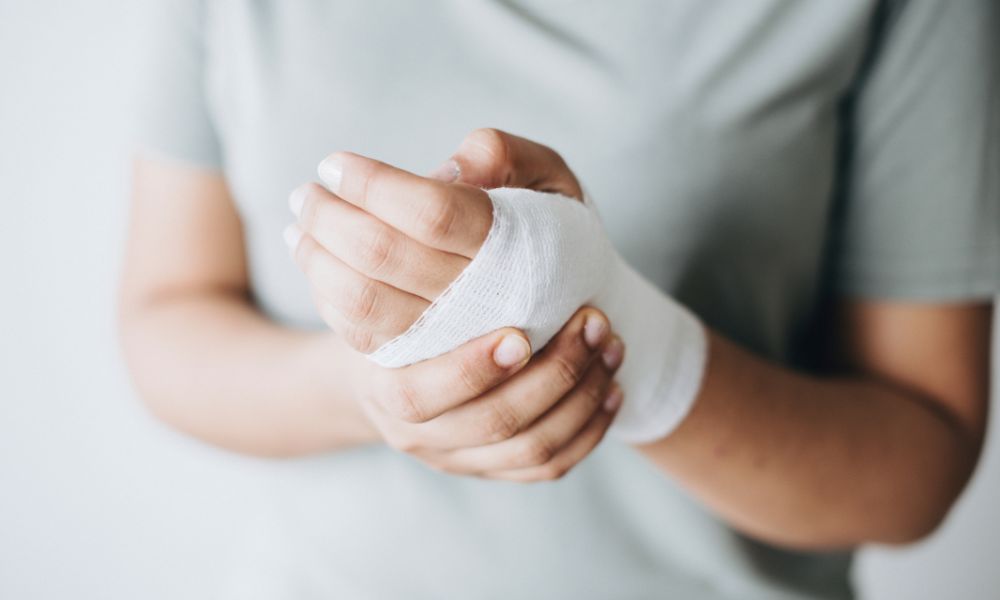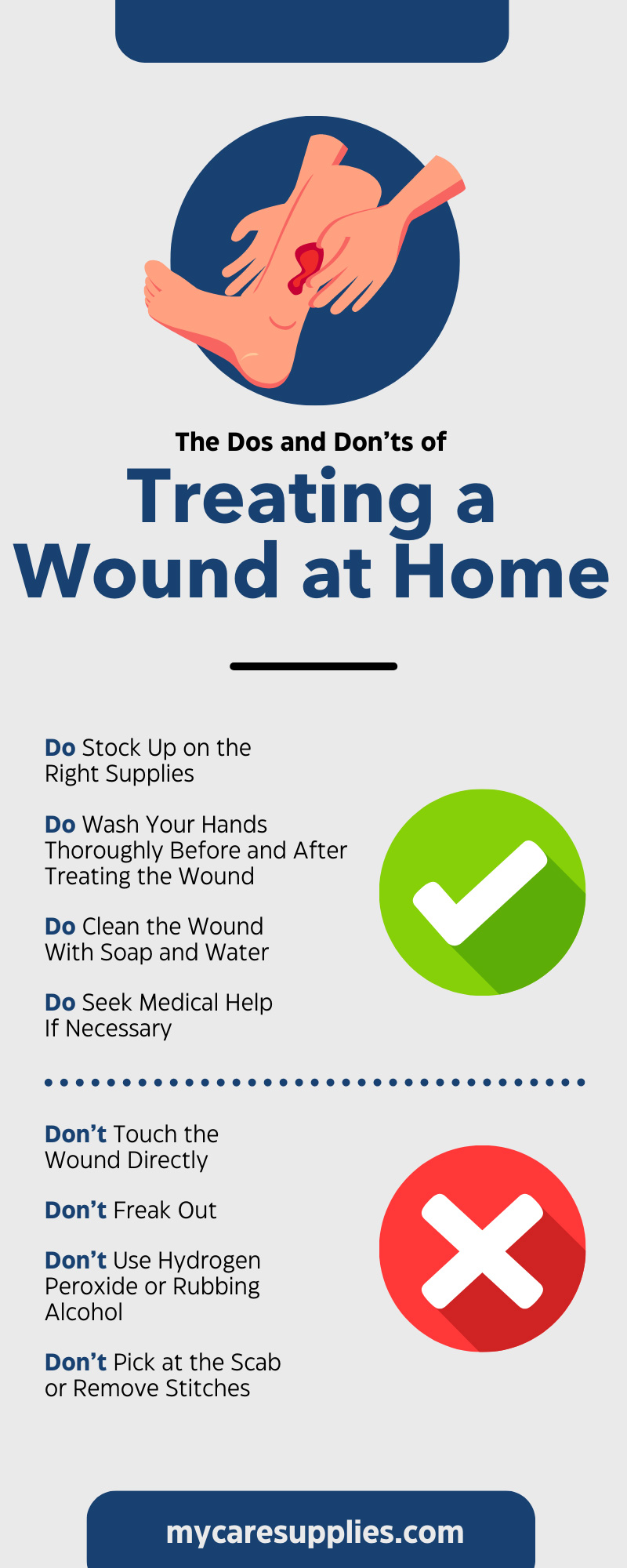The Dos and Don’ts of Treating a Wound at Home
Posted by Jeanne Lowry on Jun 27th 2023

Caring for wounds at home can be an important part of daily life, no matter your age or activity level. Whether a minor scrape from gardening, a deep cut while cooking dinner, or something more serious requiring medical attention, knowing how to treat a wound safely and effectively is critical.
Fortunately, with the right preparation and knowledge about treating wounds, you can rest easy knowing you will be able to take appropriate steps to ensure optimal healing with minimal risk. To help, we’ve put together a comprehensive list of dos and don’ts when it comes to treating injuries at home.
Do Stock Up on the Right Supplies
To prepare for minor cuts and scrapes, stocking up on the right medical dressing supplies is key since getting them after the fact won’t be a realistic possibility. Items such as antiseptic wipes, bandages, and antibiotic ointment are essentials you should have in your medicine cabinet. These items can help prevent infection and promote faster healing.
Plus, having the tools to take care of any minor injuries that may happen is reassuring. By being proactive and keeping these supplies on hand, you’ll be better equipped to handle any bumps and bruises that come your way. So take the time to stock up and be prepared.
Don’t Touch the Wound Directly
When it comes to wounds, there are a few important things to keep in mind. First and foremost, avoid touching the wound directly. Doing so can introduce unwanted bacteria and contaminants, leading to possible infections and prolonging the healing process.
If you must touch the wound directly, put on medical-grade gloves first. It may be tempting to inspect the wound with your bare hands. However, wearing gloves is a simple and effective way to ensure you’re keeping the area clean and free of harmful pathogens. By following this basic guideline, you’ll do your part to support the healing process and keep yourself safe from potential complications.
Do Wash Your Hands Thoroughly Before and After Treating the Wound
Treating a wound can be a bit intimidating, especially if it looks bad, but taking the proper precautions beforehand can make all the difference. For instance, one essential step in the wound care process is thoroughly washing your hands before and after administering treatment. Even though you shouldn’t touch the wound directly, mistakes happen, so prepare for their inevitability.
Not only does washing your hands reduce the risk of further contamination, but it also ensures your wound remains as clean as possible during the healing process. While it may seem like a small step, it’s crucial in maintaining the overall health of the affected area.
Also, don’t forget to wash your hands again afterward. In case any germs get on your hands, you won’t want to pass them along to other parts of your body or to other people. As long as you remember to wash your hands before and after treatment, you shouldn’t have anything to worry about.
Don’t Freak Out
This is easier said than done, but it’s important not to freak out when looking at your wound. Losing control in this situation will lead to poor decision-making during this process. If necessary, ask someone who lives with you for help. No one is too old to ask for assistance with an injury. Having someone you trust nearby will make a huge difference in how you handle the situation, whether they clean the wound themselves or keep you calm as you do.
Do Clean the Wound With Soap and Water
Keeping a wound clean is crucial to prevent it from becoming infected. One of the simplest ways to clean a wound is to use soap and water. Make sure to use gentle soap and lukewarm water to avoid damaging the skin. Gently cleanse the area around the wound with soap and water. Be careful not to scrub the wound itself, which could cause further damage.
Once you’re done, rinse the area thoroughly to remove any soap residue. This step may seem small, but it can go a long way in preventing infection and promoting proper healing. Remember, a little extra care can make a big difference.
Don’t Use Hydrogen Peroxide or Rubbing Alcohol
If soap and water aren’t enough, you might need to use something a bit stronger. However, be cautious about what you use when disinfecting cuts or wounds. While hydrogen peroxide and rubbing alcohol may seem like go-to options, they can actually do more harm than good. These substances can delay the healing process and even damage the surrounding healthy tissue.
Instead, opt for a topical antibiotic or saline solution to clean the area. These products are specifically made for treating wounds at home, so buy them when picking up your other wound-care supplies.
Do Seek Medical Help If Necessary
Many people don’t like to go to the doctor for what seems to be a minor wound. However, even the smallest of wounds can become dangerous if you don’t properly care for them. If your wound doesn’t stop bleeding or if it stings badly, consider seeking outside medical help.
Depending on the severity, you might need to go directly to the emergency room. Have someone else take you there if the pain or bleeding is too distracting. However, if it’s not that bad, you can set up an appointment with your primary care doctor to have them examine it. Just make sure you make the appointment sooner rather than later.
Don’t Pick at the Scab or Remove Stitches
Even after the wound has started to heal, you still need to take care of it properly. One of the most critical things you should avoid doing is picking at the scab or removing stitches without consulting your doctor first. Doing so may damage the surrounding tissue and lead to infection or delays in the healing process. Instead, follow your doctor’s instructions for wound care and ask for advice on how to avoid itching or discomfort.
By following all of the steps in this list of dos and don’ts for treating a wound at home, your wounds will heal effectively, and you can recover quickly. Remember to consult your doctor for serious or complicated wounds, but you can deal with most wounds within your own home.


